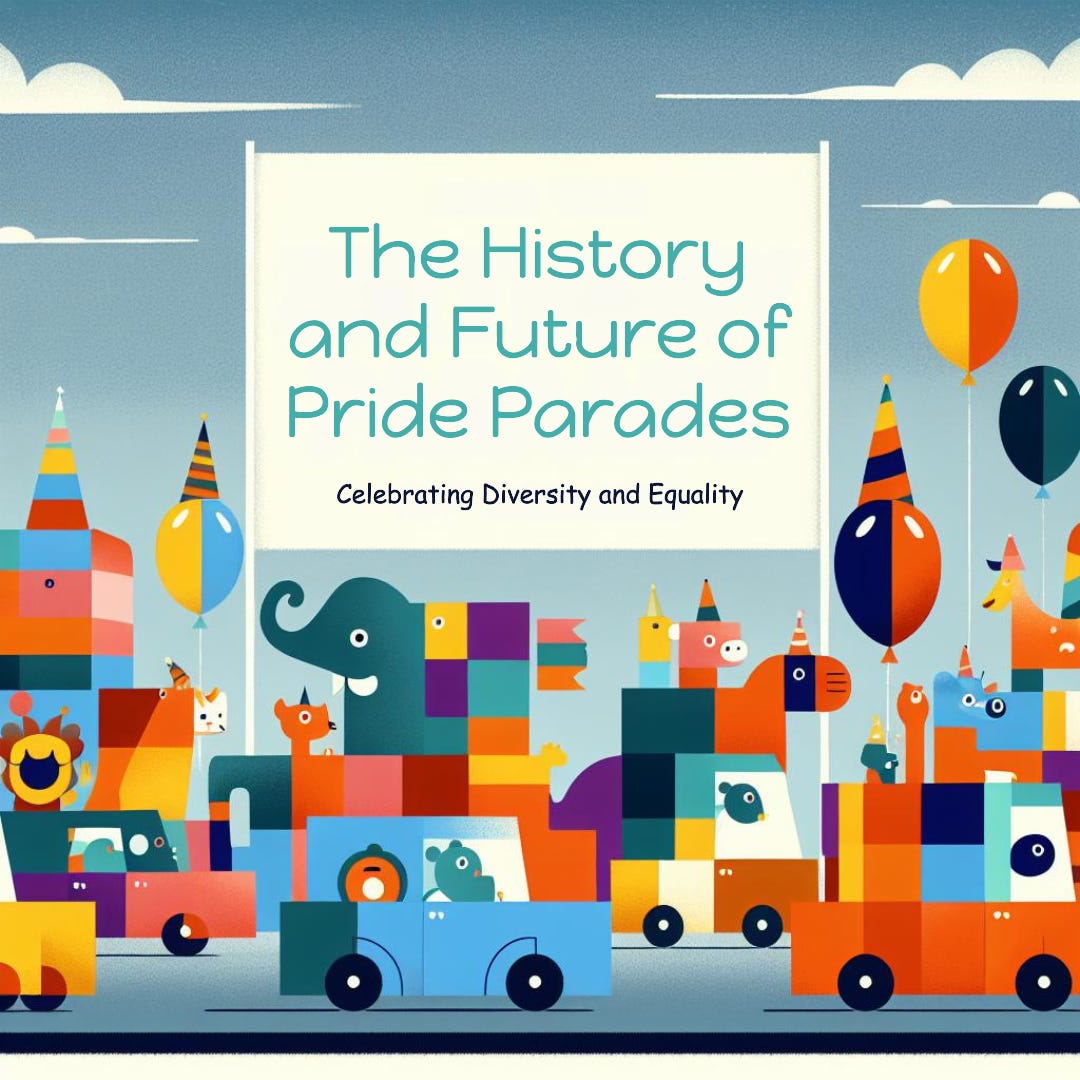Pride Parades: The History, Significance, and Future.
Pride Parades: A Rainbow Journey of Love and Equality
Pride parades, often known as LGBTQ+ Pride marches, have become an iconic celebration of love, diversity, and acceptance worldwide. As an advocate for the LGBTQ+ community, I, Kooky, am thrilled to take you on a journey through the rich history, significance, challenges, and the promising future of Pride parades. In this article, we'll unravel the origins of these colorful spectacles, delve into their deep significance, assess the hurdles the LGBTQ+ community has faced, and envision what lies ahead on the path to true equality and inclusion.
The Origin of Pride Parades
A Bold Beginning
The roots of Pride parades trace back to the Stonewall riots of 1969 in New York City, a pivotal moment in LGBTQ+ history. Fueled by the desire for justice, LGBTQ+ individuals, mainly led by transgender women of color, resisted police brutality and discrimination. The Stonewall Inn uprising sparked a revolution, giving birth to the first Pride parade, commemorating the fight for LGBTQ+ rights.
Spreading the Rainbow
Pride parades quickly spread across the United States, reaching San Francisco, Los Angeles, and beyond. As the movement gained momentum, it crossed borders, leading to the first international Pride parades in the 1970s. These parades provided a platform for visibility, unity, and solidarity, making LGBTQ+ issues impossible to ignore.
The Significance of Pride Parades
Celebrating Diversity
Pride parades are more than mere festivities; they are a powerful symbol of LGBTQ+ pride and identity. They allow people to embrace their true selves openly, fostering a sense of belonging and acceptance. These events showcase the incredible diversity within the LGBTQ+ community, challenging stereotypes and prejudices.
Advocating for Change
Pride parades serve as a platform for activism and advocacy. Beyond the glitter and floats, they are a call to action, demanding equal rights, marriage equality, and protection against discrimination. They provide a space for LGBTQ+ organizations to raise awareness and support crucial causes.
Challenges and Progress
Overcoming Obstacles
Despite remarkable progress, Pride parades have faced opposition and backlash, highlighting the ongoing struggle for LGBTQ+ rights. Discrimination, violence, and attempts to silence the community persist, emphasizing the need for continued advocacy.
Legislative Milestones
Pride parades have contributed to significant legislative changes, including marriage equality and anti-discrimination laws. These milestones, however, are only a part of the journey towards full LGBTQ+ equality. The battle for transgender rights and healthcare access remains ongoing.
The Future of Pride Parades
Embracing Inclusivity
The future of Pride parades promises even greater inclusivity. They will continue to evolve, incorporating the voices of marginalized LGBTQ+ communities, ensuring that no one is left behind. Transgender and non-binary individuals will play a more prominent role in shaping the narrative.
Global Expansion
Pride parades are no longer limited to Western countries. Their global reach will expand, helping LGBTQ+ communities worldwide gain visibility and advocate for change. Smaller cities and regions will host their own events, strengthening the global movement for equality.
Conclusion
Pride Parades: A Kaleidoscope of Hope
Pride parades have come a long way since their inception, evolving into a symbol of hope, resilience, and love. As we look to the future, it is clear that these colorful celebrations will continue to break down barriers and pave the way for a more inclusive world. Together, we can ensure that every LGBTQ+ individual can walk proudly and confidently in a world that fully embraces them.
Sources
Herek, G. M. (2007). Confronting sexual stigma and prejudice: Theory and practice. Journal of Social Issues, 63(4), 905-925.
Rimmerman, C. A., & Wilcox, C. (2011). Gay rights, religious freedom, and the law: Conflict and compromise in the United States and Canada. University of Michigan Press.
Beemyn, B. (Ed.). (2017). Queer studies: A lesbian, gay, bisexual, and transgender anthology. NYU Press.
Aizura, A. Z. (2018). Mobile subjects: Transnational imaginaries of gender reassignment. Duke University Press.
LGBTQ+ History Month Official Website. https://lgbtqhistorymonth.com/




